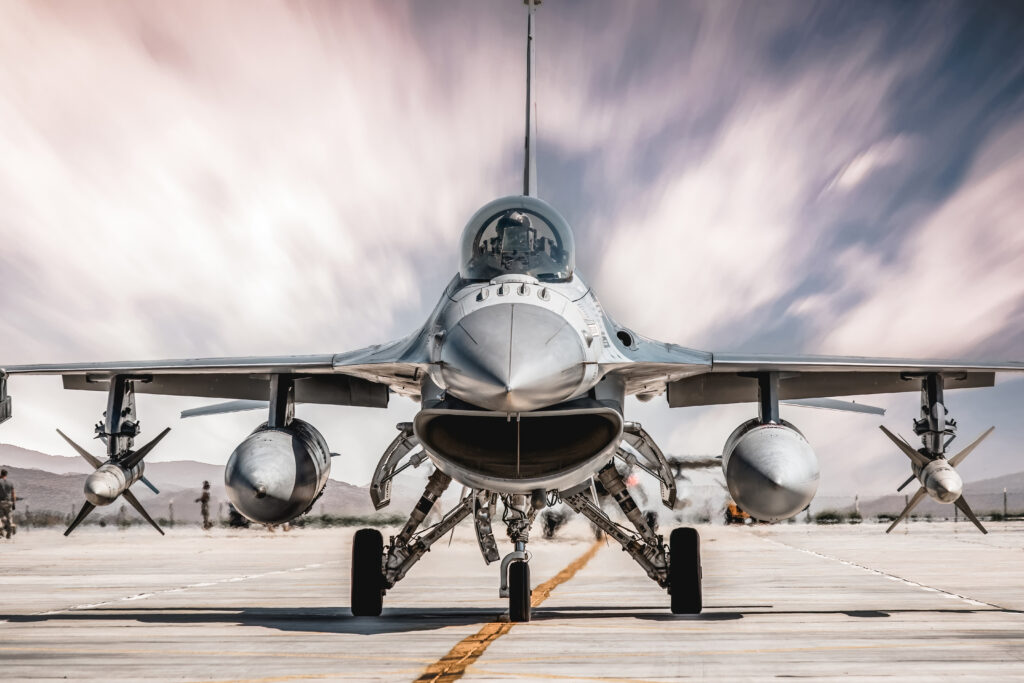22 Apr F-16s in Unlikely Skies: Argentina, Ukraine, and Vietnam Redefine Global Defense
By,
Jesús Daniel Romero, Co-Founder and Senior Fellow, MSI²
The acquisition of U.S.-made F-16 fighter jets by Argentina, Ukraine, and Vietnam, nations historically constrained by economic, ideological, or geopolitical barriers, marks a transformative shift in global defense dynamics.
As a retired U.S. Naval Intelligence Officer, I find these developments both surprising and deeply significant. My experience negotiating sensitive bilateral agreements in Vietnam to account for missing U.S. personnel offers a unique perspective on the evolving U.S.-Vietnam relationship. These F-16 deals not only modernize regional air forces but also challenge entrenched narratives promoted by regimes like Cuba and Venezuela, signaling a broader strategic realignment with far-reaching implications for global security.
Argentina: A South American Pivot
In April 2024, Argentina signed an agreement to acquire 24 former Danish F-16 fighter jets, marking a significant modernization of its air force (Felstead, 2024). This decision aligns Buenos Aires with NATO standards and strengthens bilateral ties with Washington. The move enhances Argentina’s deterrence capabilities in the South Atlantic and could reshape regional dynamics with neighbors such as Chile and Brazil.
Ukraine: F-16s in the Fight for Survival
Ukraine’s adoption of F-16s exemplifies its rapid adaptation amid ongoing conflict. Since receiving its first jets from European allies, including the Netherlands and Denmark, in August 2024, Ukraine has employed F-16s to intercept Russian missiles and conduct ground strikes (Reuters, 2025). President Volodymyr Zelensky confirmed additional deliveries in March 2025, though challenges, including pilot losses and uncertainties over U.S. aid, remain (Kyiv Independent, 2025). Bolstered by French Mirage 2000 jets, Ukraine’s transition from Soviet-era MiG-29s and Su-27s to Western systems is remarkable.
Vietnam: A Strategic Signal to China
Vietnam’s agreement to purchase at least 24 F-16V fighter jets from the United States, reported in April 2025, is geopolitically significant (Radio Free Asia, 2025). By moving away from Russian aircraft like the Su-22, Su-27, and Su-30, Hanoi is modernizing its air force and deepening its partnership with the United States. This move sends a clear message to China amid escalating tensions in the South China Sea, reinforcing Vietnam’s role in countering Beijing’s regional ambitions.

Defying Expectations
The F-16 acquisitions by Argentina, Ukraine, and Vietnam upend conventional assumptions:
- Historical Barriers: Argentina’s economic struggles, Ukraine’s Soviet legacy, and Vietnam’s anti-U.S. history rendered F-16 acquisitions improbable.
- Geopolitical Realignment: These deals signal a shift toward U.S. and NATO-aligned systems, countering Russian and Chinese influence. Argentina’s rejection of Chinese jets, Ukraine’s departure from Soviet platforms, and Vietnam’s diversification from Russian suppliers highlight this trend.
- Ideological Fallout: Vietnam’s decision directly challenges the rhetoric of Cuba and Venezuela, which has relied on Hanoi’s legacy to sustain anti-U.S. narratives. The contrast with Venezuela’s aging F-16 fleet, a relic of a pre-socialist era, further underscores Hanoi’s forward-looking approach.
Strategic Implications
These F-16 acquisitions reshape global security in several critical ways:
- Regional Power Dynamics: Argentina’s F-16s enhance its influence in South America. Ukraine’s jets bolster NATO’s eastern flank, despite uncertainties in U.S. support. Vietnam’s F-16s strengthen its position against China, aligning with U.S. strategy in the Indo-Pacific.
- U.S. Defense Exports: Lockheed Martin’s F-16 remains a cornerstone of U.S. arms exports, with production scaling to 48 jets annually by 2025.
- Alliance Building: The acquisitions foster deeper U.S. bilateral ties, enabling interoperability and joint training. For Vietnam, this could pave the way for expanded cooperation in naval systems and missile defense.
Challenges and Risks
Significant obstacles persist. Argentina’s economic constraints may hinder F-16 maintenance. Ukraine grapples with pilot shortages and fluctuating U.S. support, with European allies like France providing Mirage jets to bridge gaps (CNN, 2025). Vietnam must navigate its new U.S. partnership while maintaining relations with Russia and China.
A New Chapter in Defense
The emergence of F-16s in Argentina, Ukraine, and Vietnam marks a pivotal moment in global defense. As explored in my bestselling novel, Final Flight: Queen of Air, the interplay of military technology and geopolitics shapes the destinies of nations. For Argentina, F-16s signal regional ambition; for Ukraine, they are a lifeline against aggression; for Vietnam, they represent a bold stand against China and a redefinition of its global role. These unlikely F-16 operators are rewriting the narrative of international security.
References
- CNN. (2025, February 7). Ukraine gets French Mirage fighter jets, more F-16s from the Netherlands. https://www.cnn.com/2025/02/07/europe/ukraine-france-mirage-fighter-jets-intl-hnk-ml/index.html
- Felstead, P. (2024, April 16). Argentina signs purchase agreement for former Danish F-16s. European Security & Defence. https://euro-sd.com/2024/04/major-news/37679/argentina-buys-danish-f-16s/
- Kyiv Independent. (2025, March 19). Zelensky confirms new arrival of F-16 jets to Ukraine. https://kyivindependent.com/zelensky-confirms-new-arrival-of-f-16-jets-in-ukraine/
- Radio Free Asia. (2025, April 21). Vietnam agrees to buy US F-16 fighters, defense website says. https://www.rfa.org/english/vietnam/2025/04/21/us-f16-fighter-jet-sale/
Reuters. (2025, February 6). Ukraine receives F-16s from Netherlands, first Mirage jets from France. https://www.reuters.com/world/europe/ukraine-receives-f-16s-netherlands-first-mirage-jets-france-2025-02-06/
